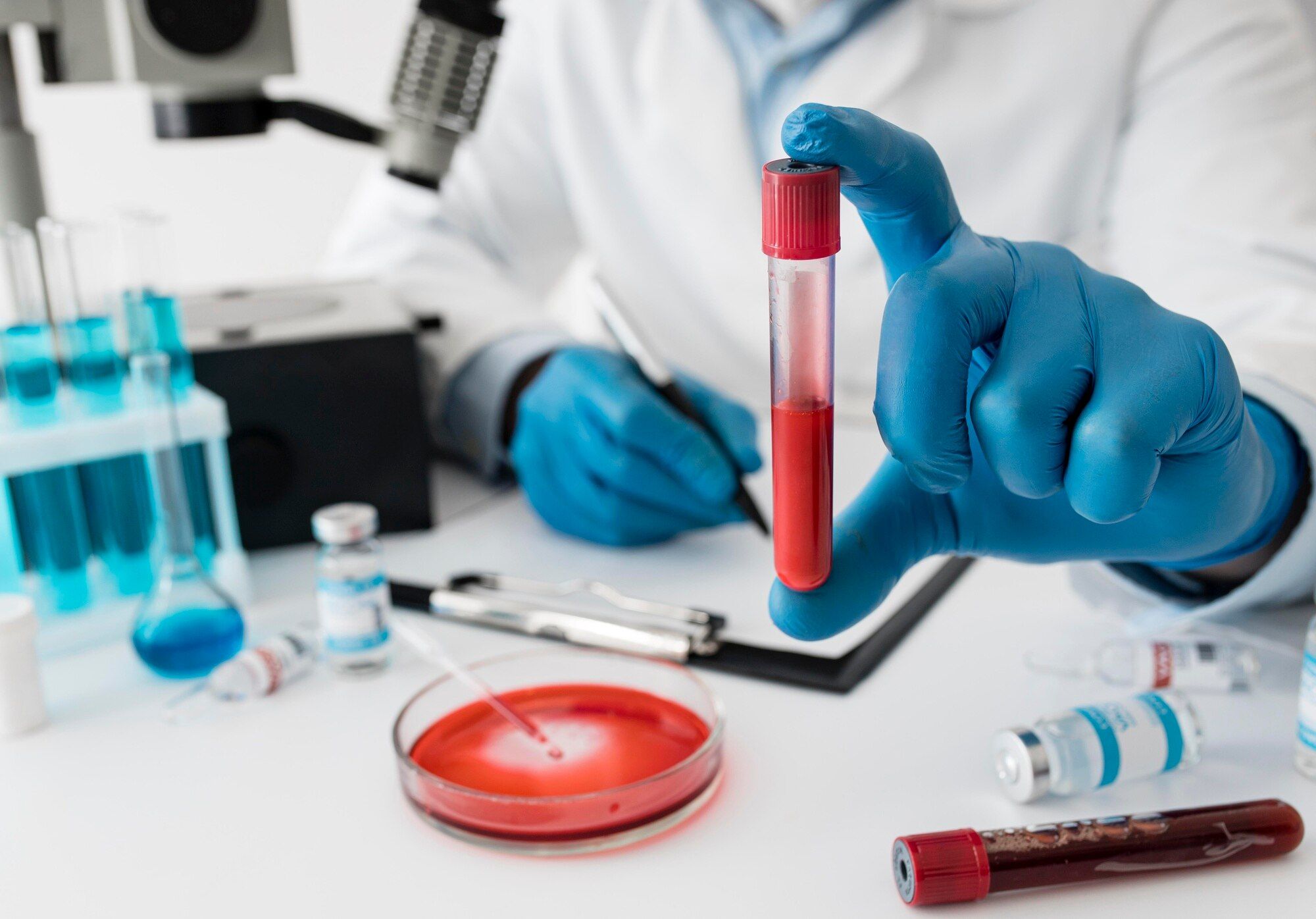General Health
RFT Test: Normal Range, Purpose, Procedure and Results
6 min read
By Apollo 24|7, Published on - 07 January 2025
Share this article
0
0 like

Kidney health plays a crucial role in maintaining overall well-being, as the kidneys filter waste, regulate fluid levels, and balance electrolytes in the body. A Renal Function Test (RFT) is an essential diagnostic tool to assess kidney health. This article provides a detailed overview of the RFT test normal range, its significance, and why it’s important for maintaining your health.
What is a Renal Function Test (RFT)?
A Renal Function Test (RFT) is a series of blood and urine tests that evaluate the performance of your kidneys. By analysing specific markers, the RFT helps determine how effectively your kidneys are filtering blood and eliminating waste products.
Why RFT is Important?
Healthy kidneys remove toxins, maintain blood pressure, and produce hormones for red blood cell production. RFTs provide insights into potential kidney problems, enabling early intervention to prevent complications.
Understanding the RFT Test and The Normal Range
1. RFT Test List
The RFT test list typically includes:
Note: The values can vary slightly depending on the laboratory and the patient's age, sex, and health status.
RFT Test Normal Range in Pregnancy
Pregnancy can influence kidney function due to increased blood volume and changes in hormone levels. Therefore, RFT test normal range in pregnancy may differ slightly from that of non-pregnant individuals. The GFR typically increases during pregnancy, and creatinine and BUN levels may be lower than usual. It's important to consult with a healthcare provider to interpret RFT results in the context of pregnancy.
Purpose of Renal Functional Test (RFT)
1. Diagnosing kidney diseases
One of the main purposes of the RFT is to diagnose kidney diseases, such as chronic kidney disease (CKD), acute kidney injury, or kidney infections. Abnormal RFT results, such as elevated creatinine or BUN levels, may indicate that the kidneys are not functioning properly.
2. Monitoring chronic kidney conditions
For individuals with chronic conditions that affect kidney function, such as diabetes or hypertension, regular RFTs are essential to monitor kidney health over time. Monitoring the RFT test normal range helps doctors detect early signs of kidney damage and adjust treatment plans accordingly.
3. Evaluating the effects of medication on kidney function
Some medications, especially nonsteroidal anti-inflammatory drugs (NSAIDs), certain antibiotics, and chemotherapies, can negatively impact kidney function. RFTs are used to monitor kidney health and ensure that medications are not causing harm.
Procedure of Renal Functional Test (RFT)
1. How to prepare for the test
Preparing for the RFT is generally simple, but there are some things you may need to consider:
- Fasting: Some RFTs may require fasting for 8-12 hours.
- Medications: Inform your doctor about medications, as they may affect results.
- Hydration: Stay hydrated unless advised otherwise.
2. Step-by-step procedure
The RFT typically involves a blood test and may also require a urine sample:
- Blood Sample Collection: A technician draws blood from a vein, usually in your arm.
- Urine Sample Collection: You may be asked to provide a urine sample for complementary tests.
- Laboratory Analysis: The samples are analysed to measure kidney markers.
3. What to expect during and after the test
- During the test: Blood collection involves minimal discomfort, while urine collection is non-invasive.
- After the test: Normal activities can be resumed immediately. Mild bruising at the blood draw site is rare but possible.
Interpreting the Renal Functional Test (RFT) Results
1. Understanding abnormal results
- An abnormal result on the RFT can indicate various conditions:
- Elevated creatinine or BUN levels may suggest kidney impairment or dehydration.
- Low GFR indicates reduced kidney function and may be a sign of kidney disease or damage.
- Changes in urine output or composition can signal kidney issues.
2. Next steps after abnormal RFT results
If your RFT results are abnormal, your doctor may recommend further tests to confirm a diagnosis. Additional tests may be advised to assess the severity of kidney damage including:
- Urine albumin-to-creatinine ratio: This test helps detect early signs of kidney damage.
- Ultrasound or CT scans: To visualise kidney structure and function.
- Kidney biopsy: To assess the extent of kidney damage.
Factors Affecting Renal Functional Test (RFT) RFT Results
Various factors can affect RFT results:
- Medications: Some drugs, like diuretics, antibiotics, and blood pressure medications, can influence RFT results.
- Diet: High protein intake can elevate BUN levels.
Conditions like diabetes, high blood pressure, and heart disease can affect kidney function and, consequently, RFT results. Patients with a history of these conditions should regularly monitor their kidney health through RFTs.
Risks and Precautions
The RFT is a low-risk procedure, but there are minimal risks associated with blood draws, such as bruising, bleeding, or infection at the needle site. However, these risks are rare and generally mild.
Before undergoing the RFT, it’s important to inform your healthcare provider about your medical history, especially if you have kidney disease, are pregnant, or are taking medications that may affect your kidney function.
Conclusion
Renal Function Tests are critical in assessing kidney health. Understanding the RFT test normal range helps in the early detection, monitoring, and management of kidney conditions.
Regular monitoring of kidney function through RFTs is essential, especially for individuals at risk of kidney disease. It enables early detection of potential issues and provides an opportunity for timely intervention and treatment. If you’re experiencing symptoms such as fatigue, swelling, or changes in urine output, it may be time to schedule the RFT test today.
General Health
Leave Comment
Recommended for you

General Health
Identifying The Symptoms Of Food Poisoning
Food poisoning, a common form of foodborne illness, occurs when individuals consume contaminated food or beverages. This article explores the symptoms and causes of food poisoning and provides valuable insights into preventing it through the implementation of food safety practices.

General Health
Blood Cancer: Types, Causes, Symptoms, Diagnosis, Treatment
Blood cancer like leukemia & lymphoma leads to an increase in abnormal blood cells, which hinder your body from performing its regular function and can be life-threatening. There is no cure for cancer but there are several ways to treat it.
.jpg?tr=q-80)
General Health
Understanding PT INR Test: What is the Normal Range for Prothrombin Time and INR?
PT INR normal range explained with details on prothrombin time levels. Learn how these values affect blood clotting and overall health.
Subscribe
Sign up for our free Health Library Daily Newsletter
Get doctor-approved health tips, news, and more.
Visual Stories

Science-backed Home Remedies for Burns and Blisters
Tap to continue exploring
Recommended for you

General Health
Identifying The Symptoms Of Food Poisoning
Food poisoning, a common form of foodborne illness, occurs when individuals consume contaminated food or beverages. This article explores the symptoms and causes of food poisoning and provides valuable insights into preventing it through the implementation of food safety practices.

General Health
Blood Cancer: Types, Causes, Symptoms, Diagnosis, Treatment
Blood cancer like leukemia & lymphoma leads to an increase in abnormal blood cells, which hinder your body from performing its regular function and can be life-threatening. There is no cure for cancer but there are several ways to treat it.
.jpg?tr=q-80)
General Health
Understanding PT INR Test: What is the Normal Range for Prothrombin Time and INR?
PT INR normal range explained with details on prothrombin time levels. Learn how these values affect blood clotting and overall health.